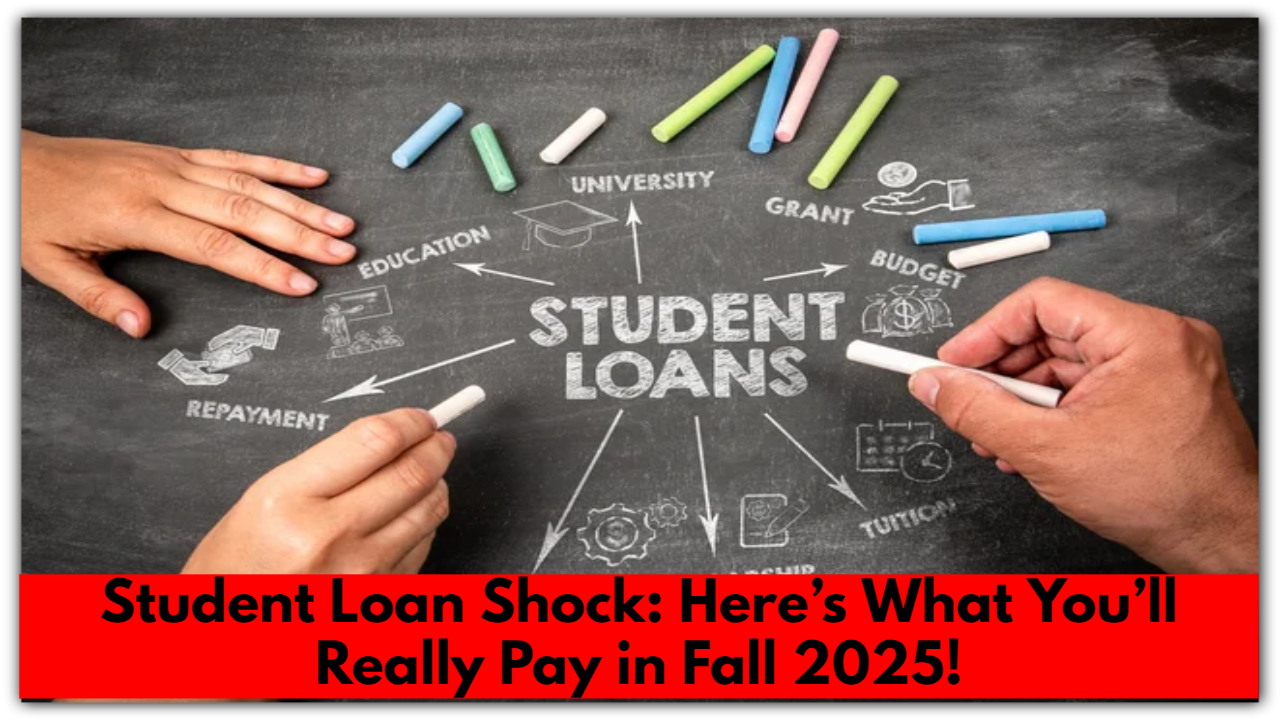Student Loan Shock: Here’s What You’ll Really Pay in Fall 2025!
So, you’re planning to head to college this fall — or maybe you’re already in school and trying to figure out how to afford another year. Either way, if you’re looking at student loans, you’re probably wondering:
“How much is this going to cost me?”
Let’s break it down in plain English. No confusing terms, no scare tactics — just real talk about what you’re signing up for.
Here’s the Deal on Interest Rates
Every year, the government sets new rates for federal student loans. These are the numbers that matter if you’re borrowing for the 2025–26 school year:
-
Undergrads: 6.39%
-
Grad students: 7.94%
-
Parent PLUS & Grad PLUS loans: 8.94%
Once you take out the loan, that rate is locked. So it won’t go up while you’re in school or after you graduate. It is what it is.
Is 6.39% a Lot?
Honestly… yeah, it’s not great. But it’s also not shocking. The economy’s been all over the place, and interest rates across the board have gone up lately.
That said, federal student loans aren’t just about the rate. Here’s what makes them different — and why most students still choose them:
-
You can adjust your monthly payment based on how much money you’re making.
-
If life throws you a curveball (job loss, health issues), you can pause payments.
-
You might qualify for loan forgiveness if you work in certain jobs (like teaching or public service).
-
And most importantly: you don’t need a perfect credit score to qualify.
So even if the interest rate feels steep, federal loans are built to be more flexible — and let’s be real, that matters when you’re just starting out.

What About Private Loans?
Yeah, you can borrow from private lenders — and if your credit score (or your parent’s) is really good, you might even get a better rate. But there are a few things to keep in mind:
-
Private loans don’t come with safety nets. No forgiveness, no income-based plans.
-
They usually require a cosigner, especially if you’re young with no credit history.
-
Some have variable rates, which means they can go up over time.
If you’re confident you’ll be able to pay them back fast, sure — private loans can work. But if you need flexibility, federal loans are just safer.
What Should You Be Doing Right Now?
Here’s your no-BS checklist:
-
Fill out the FAFSA — it’s the key to unlocking federal aid, and it’s free. Just do it.
-
Stick to federal loans if you can — they’re the most student-friendly option.
-
Only borrow what you need — not what sounds nice. You don’t want to be paying interest on takeout five years from now.
-
Shop around only if you really need private loans — and compare rates, terms, and fees.
-
Learn about repayment plans now — especially the SAVE plan, which caps your payments based on your income.
Can You Refinance Later?
Yep. After you graduate, if your financial situation is solid and your credit score is decent, you can refinance your loans with a private lender. That could lower your interest rate — but here’s the catch:
Once you refinance a federal loan, it becomes a private loan. And that means losing all the helpful stuff like income-driven repayment and forgiveness. So, make sure it’s the right move for you before you sign anything.
No one loves student loans. But they don’t have to be scary either.
If you understand what you’re borrowing, know your options, and keep your loan amount realistic, you’ll set yourself up way better for the future. You’re not alone — tons of people borrow for school, and most of them figure it out.
So take a breath. Ask questions. Borrow smart. And if you ever feel lost, you’ve got help — including me.


Comments are closed, but trackbacks and pingbacks are open.